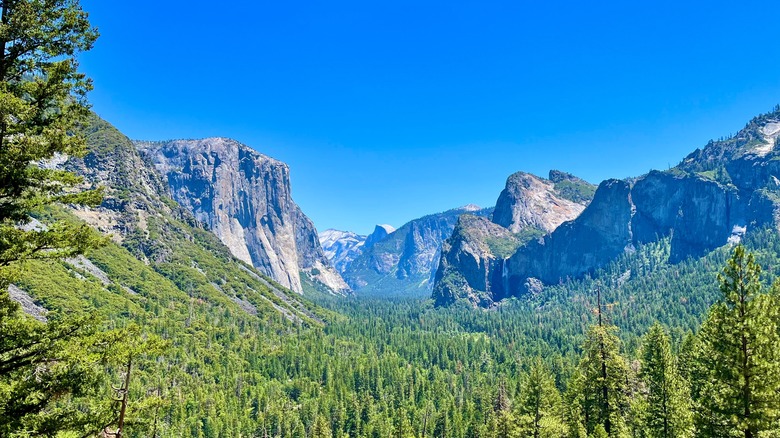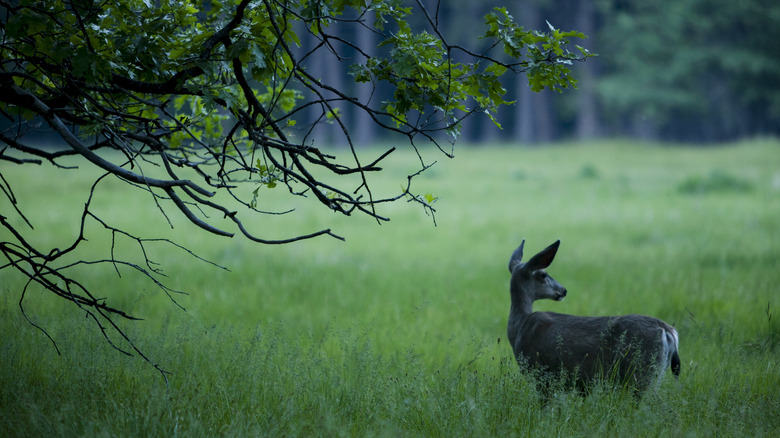Yosemite Rangers Wish Tourists Would Treat These Critters Like The Dangerous Animals They Are
Yosemite National Park is easily one of the top must-visit national parks to add to your bucket list, and with its popularity comes issues park rangers are, frankly, sick of dealing with. One is the tendency for tourists to underestimate the wildlife. In fact, one of the most dangerous animals in Yosemite happens to be one of the cutest. It's actually the mule deer, those doe-eyed cousins of Bambi, that is responsible for the most wildlife-related injuries in the park. Rangers at Yosemite recently took to social media to warn park visitors that just because it's friend-shaped doesn't mean it's friendly.
Rangers say too many visitors are making a dangerous mistake by treating mule deer like docile, pettable creatures instead of the wild, unpredictable animals they actually are. Despite their cuteness, they can weigh up to 280 pounds, and they aren't afraid to use their antlers if provoked — especially during mating season in the fall, when males are more aggressive and territorial. But even outside mating season, startled deer can lash out with their hooves and antlers or bolt into traffic, putting both people and animals at risk. Multiple visitors have been seriously injured in recent years by mule deer after getting too close or trying to feed them.
Beyond the potential harm to humans, interaction is also dangerous for the deer. When visitors offer them food, the deer get used to people and will return to populated areas looking for more snacks. This can lead to wildlife-vehicle collisions, more risky encounters, and even more deaths. "A fed animal is a dead animal" might sound harsh, but in national parks, it's a saying for a reason.
Keep your distance from mule deer and other wildlife in Yosemite National Park
Several social media accounts have become popular posting viral clips of "tourons" in national parks doing pretty dumb stuff. With that, we've seen it all — tourons taking selfies within feet of massive elk, crowding around baby bears, and parents bringing their children within reach of dangerous bison. What these visitors don't realize is that every act of human interference — however well-intentioned — alters animal behavior in ways that can be deadly.
When wildlife lose their fear of humans, they stray from their natural patterns. They can linger near roads and raid campsites — more time near people means less time in their natural habitats, which can disrupt behavior and harm their chances of survival. And when they venture too close to civilization, they're more likely to be hit by cars. That's why rangers urge visitors to keep a safe distance from wildlife at all times — 50 yards is a good rule to remember. Visitors should also know Yosemite is one of the national parks where bear spray is completely banned, so if you do happen to come across one, the best thing to do is make lots of loud noise and big gestures to scare it away.
There are lots of family-friendly activities to do in Yosemite National Park, and it can be a teachable moment for children to learn the safe way to behave around wildlife. Yosemite's park guidelines are meant to keep both visitors and animals safe and geological features protected. Harassing and feeding wildlife can also get you fined and even banned from the park. So if you spot a mule deer (or any other animal) on your hike, enjoy the moment from a respectful distance. Your best souvenir will be the story, not a selfie.

